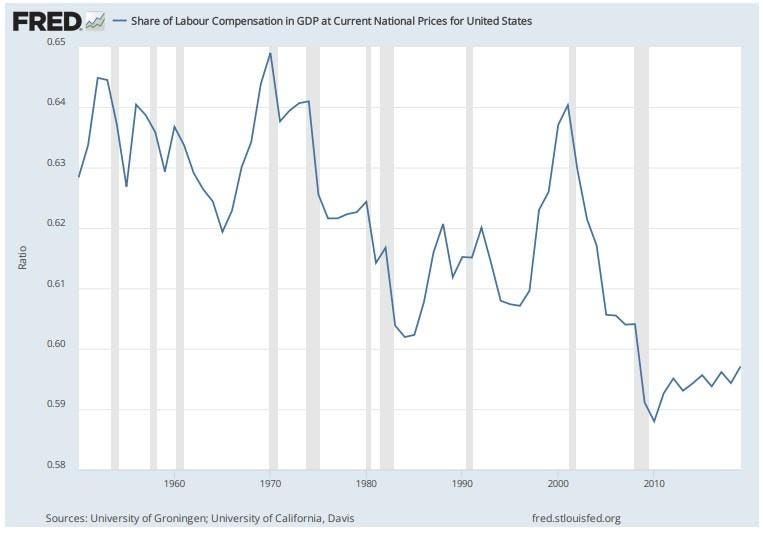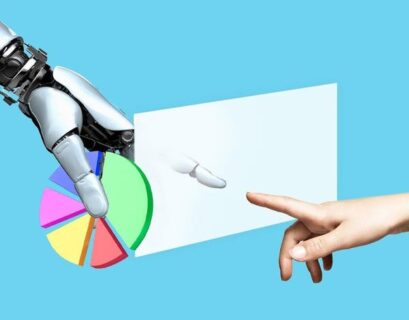One of today’s most crucial debates revolves around the potential impacts of Generative Artificial Intelligence (Gen AI) models on the American labor market. Some analysts view this advancing technology as a potential harbinger of widespread job displacements, affecting both highly skilled professionals and those in less specialized roles.
John Thornhill, the editor of innovation at the Financial Times, sheds light on the term “useless people” being used to characterize the repercussions of the AI revolution on workforce dynamics. Quoting a West Coast venture capitalist, Thornhill highlights a stark prediction: “There will only be two categories of employment in the future: those instructing machines and those being instructed by machines.”
Despite concerns about job losses, there are instances where the emergence of new occupations has offset employment declines in certain sectors. For example, a study by the National Bureau of Economic Research (NBER) reveals that 60% of current job roles did not exist back in 1940.
The discourse surrounding AI’s impact on employment levels often centers on whether it will predominantly lead to labor-saving or labor-intensive outcomes.
A historical perspective showcases contrasting scenarios: the mechanization of agriculture during the late 19th and early 20th centuries exemplifies labor-saving practices, evident in the sector’s dwindling share of the workforce from around two-thirds in 1850 to a mere 5% today. Conversely, the integration of computers between 1970 and 1995 spurred a surge in demand for college-educated individuals, creating income disparities between skilled and unskilled workers, as noted in a study by Autor, Katz, and Krueger.
This phenomenon, coupled with globalization, likely contributes to the diminishing proportion of labor income relative to GDP over the past two decades. Acemoglu and Restrepo attribute this trend to sluggish productivity growth across the labor force due to a slowdown in the creation of new roles associated with technological advancements. The surge in profit margins within the U.S. software industry has coincided with a real estate boom.
When considering the role of Gen AI in this landscape, its potential to impact a broader spectrum of occupations distinguishes it from previous technologies. Goldman Sachs economists estimate that approximately two-thirds of U.S. job roles are susceptible to AI-driven technological disruptions, with up to half of tasks in exposed positions subject to replacement. The escalating adoption of Gen AI by businesses is anticipated to fuel future productivity growth, according to Goldman and other research entities.
Nevertheless, the adoption of new technologies by enterprises is often gradual due to inherent delays. For instance, only a fraction of Microsoft’s revenue growth in the past year was attributed to AI, highlighting the time lag in reaping substantial benefits. Analysts suggest that companies like Alphabet and Amazon may witness lower profits until they fully capitalize on AI services.
Zachary Kroff, an economist at the U.S. Census Bureau, underscores a notable shift in AI utilization patterns, with larger enterprises initially leading the AI adoption trend. However, recent trends indicate a U-shaped pattern, with both large and small businesses exhibiting high rates of AI integration. This shift is attributed to user-friendly tools like ChatGPT, enabling smaller firms to leverage AI technologies effectively.
The application of tools such as ChatGPT varies across industries, with customer service and cybersecurity being popular applications, as indicated by a Forbes Advisor survey. Other prevalent uses include customer relationship management, inventory management, and content generation. In contrast, professional users with more intricate needs demonstrate lower adoption rates of AI tools.
From a personal standpoint, the primary advantage of Gen AI and similar large language models lies in their ability to swiftly analyze vast datasets, enhancing operational efficiency for users. Despite this computational prowess, human operators retain a distinct edge over machine learning systems based on their experiential insights.
In alignment with MIT economist David Autor’s positive outlook, Gen AI holds the promise of empowering non-college-educated individuals to tackle complex tasks, potentially leading to higher remuneration and narrowing income disparities. This shift could contribute to mitigating income inequality and moderating stock market fluctuations if profits realign with long-term GDP trends.










